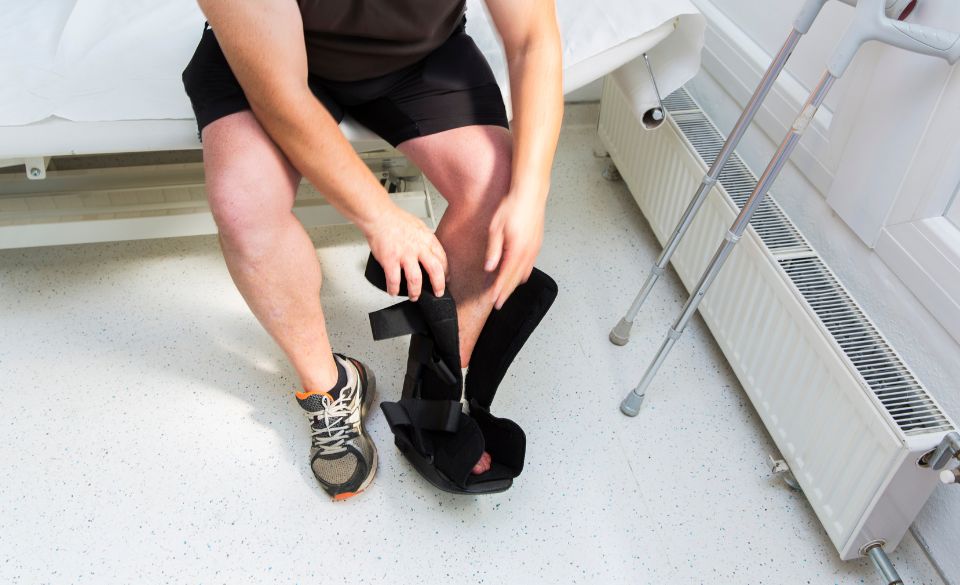
Running After Ankle Surgery: Returning to the Road of Fitness
Page Contents
- How Long After Ankle Surgery Can I Run?
- Can I Run After Ankle Ligament Surgery?
- How Do I Return to Running After a Broken Ankle?
- Is Running Good for Ankle Recovery?
- What Is the Best Cardio for Recovering Ankle?
- How Long Does It Take to Go from Non-Weight Bearing to Full Weight Bearing?
- Conclusion: Embrace the Journey to Running Again
Ankle surgery can be a daunting experience, and one of the burning questions that often arises during the recovery process is when you can resume running. Running is not only a popular form of exercise but also a beloved activity for many enthusiasts. In this article, we will explore the common concerns and questions regarding running after ankle surgery, including the time frame for returning to running, the impact of different ankle surgeries on running, and the benefits of running for ankle recovery.
How Long After Ankle Surgery Can I Run?
The timeline for returning to running after ankle surgery can vary depending on the type of surgery and the individual’s healing process. It is crucial to follow the guidance of your orthopedic surgeon or physical therapist, as they will provide personalized recommendations based on your specific case.
In general, most individuals can start a gradual return to running between 12 to 16 weeks after ankle surgery. However, this timeline may differ for procedures such as ankle ligament repair or reconstruction, where the recovery period can extend up to six months. It’s important to prioritize healing and follow a structured rehabilitation program before reintroducing running into your fitness routine.
Can I Run After Ankle Ligament Surgery?
Ankle ligament surgery is a common procedure for individuals who have experienced ligament tears or instability. While the recovery process may be longer compared to other ankle surgeries, it is still possible to return to running after ankle ligament surgery.
After your surgeon determines that your ankle has healed sufficiently, a gradual progression is necessary. Start with low-impact exercises, such as walking and stationary cycling, to rebuild strength and mobility. Once you have regained sufficient strength and stability, your healthcare provider will guide you through a step-by-step process of reintroducing running. This may involve a combination of walking, jogging, and interval training to gradually increase your running duration and intensity.
How Do I Return to Running After a Broken Ankle?
Recovering from a broken ankle requires patience and a gradual approach to return to running. The timeline for resuming running will depend on the severity of the break, whether surgery was required, and the individual’s healing process.
It is essential to follow the guidance of your orthopedic surgeon or physical therapist, who will likely recommend a phased approach to running. This may involve initially focusing on mobility exercises, followed by weight-bearing activities, such as walking or using an elliptical machine. As your ankle strengthens and heals, you can progress to running on a flat, even surface and gradually increase your running duration and intensity.
Is Running Good for Ankle Recovery?
Running can be beneficial for ankle recovery when approached with caution and under professional guidance. It helps promote cardiovascular fitness, strengthens the lower extremities, and enhances overall endurance. However, it is crucial to ensure that your ankle is sufficiently healed and strong enough to withstand the impact and demands of running.
Running also provides an opportunity to improve proprioception, balance, and coordination, which are vital components of ankle stability. However, it’s important to start slowly and gradually increase the intensity and duration of your runs to avoid overloading the healing structures of the ankle.
What Is the Best Cardio for Recovering Ankle?
If running is not yet suitable during your ankle recovery, there are alternative cardiovascular exercises that can help maintain your fitness level and support your overall recovery. Low-impact exercises such as swimming, cycling, and using an elliptical machine can be excellent options for maintaining cardiovascular endurance without placing excessive stress on the healing ankle.
These activities can be gradually integrated into your rehabilitation program, allowing you to stay active and maintain your cardiovascular fitness while giving your ankle time to heal. Consult with your healthcare provider or physical therapist to determine the most appropriate cardiovascular exercises for your specific situation.
How Long Does It Take to Go from Non-Weight Bearing to Full Weight Bearing?
The transition from non-weight bearing to full weight bearing is an important milestone in ankle surgery recovery. However, the timeline for this transition can vary depending on the type of surgery, the extent of the injury, and the individual’s healing progress.
In some cases, individuals may begin partial weight-bearing shortly after surgery, while others may require a more extended period of non-weight bearing. The transition typically involves progressing from non-weight bearing to partial weight bearing with the assistance of crutches or a walker, and eventually to full weight bearing.
Your healthcare provider or physical therapist will monitor your progress and guide you through this transition, ensuring that your ankle is stable and strong enough to support your body weight. It’s crucial to follow their instructions and not rush the process to avoid potential setbacks or complications.
Conclusion: Embrace the Journey to Running Again
Returning to running after ankle surgery requires patience, dedication, and a gradual approach. It’s important to remember that the timeline for resuming running can vary depending on the type of surgery and the individual’s healing process. Following the guidance of your healthcare provider or physical therapist is crucial to ensure a safe and successful return to running.
Whether you’ve undergone ankle ligament surgery or are recovering from a broken ankle, it’s essential to prioritize healing and follow a structured rehabilitation program. Gradually reintroduce running into your routine, starting with low-impact exercises and progressing at a pace that allows your ankle to rebuild strength and stability.
Running can be beneficial for ankle recovery, as it promotes cardiovascular fitness, strengthens the lower extremities, and improves balance and coordination. However, it’s important to approach running with caution and gradually increase the intensity and duration of your runs to avoid overloading the healing structures of the ankle.
If running is not yet suitable during your recovery, there are alternative cardiovascular exercises, such as swimming, cycling, and using an elliptical machine, that can help maintain your fitness level and support overall recovery. Consult with your healthcare provider or physical therapist to determine the most appropriate options for your specific situation.
Remember, the journey to running again is unique to each individual. Embrace the process, stay positive, and celebrate your progress along the way. With perseverance and a focus on proper rehabilitation, you’ll be lacing up your running shoes and hitting the pavement once more. Your determination and dedication will lead you back to the joy and freedom of running.



